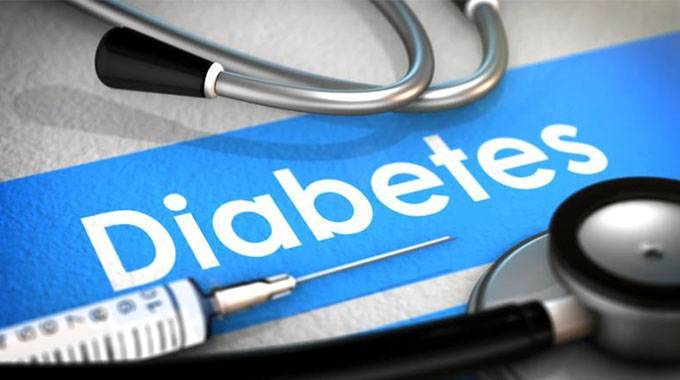Watch your child’s diet to fight obesity, NCDs

Andile Tshuma, Chronicle Reporter
ZIMBABWE is facing a growing and worrying trend of obesity and diabetes cases as a result of failure to meet some of the global nutritional targets, and even more worrying is the growing trend of obesity and non-communicable diseases in children.
Health experts in the country and globally have expressed concern over the increasing number of overweight children and the growing trend of childhood obesity.
Many have agreed that such challenges are stemming from sedentary lifestyles and poor eating habits.
Recently, there was a very engaging conversation on Twitter about what people are feeding their children, particularly school going age groups. The conversation was quite an eye opener for many as it showed that while many people seemed worried about the deteriorating health of their children, the apple had not fallen that far from the tree.
Children are often mirrors of ourselves. Do you approve of what your child loves to do, eat, or play with?
Do you think you have the right impact on your child’s food or lifestyle choices? Through socialisation in the home, children learn behaviours that they may go out and exhibit when they interact with other children. What kind of example are you setting for your child? Throughout the early childhood development stages, children learn a lot of habits by observing what adults do and mimicking exactly that. How good is your example?
A school expressed concern on how many parents were packing unhealthy lunches for children almost on a daily basis. She said some bring white bread with polony and Russian sausages and ham and some ‘‘jiggies’’ with fizzy drinks from the beginning to the end of the term. Such kids will also snack on biscuits and cakes and doughnuts and never on fruit. They rarely ever brought a water bottle to school.
While club sandwiches and different types of sausages will seem like the easy go to lunch for a Grade Four pupil, the amount of processed foods that the child would have consumed by the end of the term is worrying. It is highly likely that this child would have eaten a very sugary cereal in the morning. When the child goes home, they may just eat instant noodles as they wait for dinner, or eat more corn snacks, however, probably by the time supper is ready the child has no appetite and will not eat isitshwala and veggies with a piece of meat. It is sad.

Most highly processed foods that children are being made to consume have been linked to various cancers and heart disease, and while some of the results such as being overweight or obese can be easily seen, some children may end up developing lifestyle related non communicable diseases more associated with adults. Children may develop diabetes and hypertension at a very young age, because of the food choices that adults make for them. Probably the child never gets to do any physical play but spends the day after school watching YouTube videos or Netflix.
It is good to award children some luxuries, but it is even better to be a responsible parent and ensure that there is balance in the diet and lifestyle of the child.
According to the global nutritional report data for 2021, Zimbabwe has shown limited progress towards achieving the diet-related non-communicable disease (NCD) targets. The country has shown no progress towards achieving the target for obesity, with an estimated 27,9 percent of adult (aged 18 years and over) women and 5,6 percent of adult men living with obesity. Zimbabwe’s obesity prevalence is higher than the regional average of 20,7 percent for women but is lower than the regional average of 9,2 percent for men. At the same time, diabetes is estimated to affect 8,1 percent of adult women and 7,3 percent of adult men.

The report shows that the prevalence of overweight children under five years of age is 2,5 percent and Zimbabwe is ‘‘on course’’ to prevent the figure from increasing.
Teaching children healthy habits should start when they are young. How often do we give in to children when they make demands in the sweet section by the tills in the supermarket? While we all may be guilty of treating little ones to what we know to be definitely not so good for them, it must not be a daily routine. Children must know that certain things are good for them, while others are not. Some tough love must apply.
Healthy habits that children must learn at home include physical activity, choosing to eat healthy even though there are nicer but less healthy options are available. Children should enjoy outdoor activities and parents must ensure that their offspring are not couch potatoes. Children must also be able to clean up after themselves, even if there is a helper at home
Non-communicable diseases (NCDs), also known as chronic diseases, are not passed from person to person but are often a result of our lifestyle over a long period of time. They are of long duration and generally slow progression. NCDs kill more than 38 million people annually, with 82 percent of NCD deaths in low- and middle-income countries. As a matter of equity, health systems need the capacity to ensure prevention, early diagnosis, and prompt and adequate treatment and rehabilitation for children and adolescents, so as to improve the health and development of all, and maximise opportunities for healthy, productive lives and enjoyment of all human rights.
It can be hard to navigate the amount of health information available to guide your children. Starting the conversation at home with the right information can enable children to take control of their health and help them make positive choices.
Habits learnt at a young age can help children become healthy adults. By spending time with your child teaching them about the benefits of eating balanced, nutritious food, your child is more likely to continue a healthy attitude to food into adulthood.












Comments